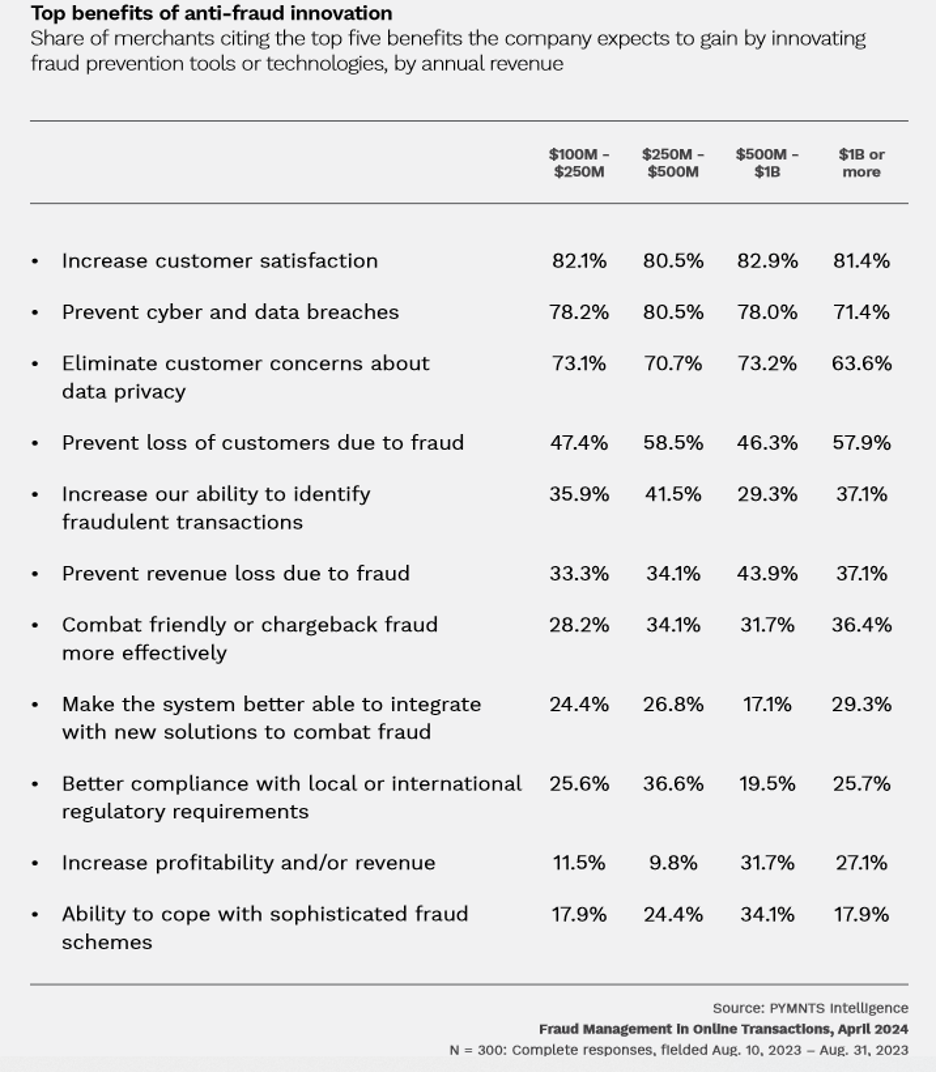
Ninety-five percent of eCommerce merchants have either already started enhancing their anti-fraud resources or plan to do so before the year is out.
That is one key takeaway from “Fraud Management in Online Transactions,” a PYMNTS Intelligence collaboration with Nuvei that looks at the fraud-related challenges unique to eCommerce merchants and explores what these players are doing to combat fraud.
The likely reason most eCommerce merchants are so focused on re-evaluating and strengthening their anti-fraud measures is that eight in 10 of them experienced a cyber or data breach within the last year.
Our report, which is based on surveys with 300 eCommerce executives, found that such breaches were the leading security challenge they were forced to negotiate last year, impacting 82% of them — with 23% identifying security breaches as their biggest challenge.
What follows on the list of other challenges facing eCommerce merchants are distinct, yet related. Seventy-seven percent of merchants say addressing customer concerns about data privacy was a top challenge, while 68% say reduced levels of customer satisfaction was an issue. Next came lost customers and revenues — in that order — which was a leading security challenge for 47% of merchants.
The thread connecting these challenges is that all of them are related to the end-customer: how they perceive a merchant’s vulnerability to fraud and how that perceived vulnerability might affect them. This may explain why 82% of the merchants we surveyed identify increased consumer satisfaction as a leading benefit that comes from updating an anti-fraud toolkit — including 21% who say it is the biggest benefit.

As the table above illustrates, not only is improving the customer experience a top reason eCommerce merchants across various revenue sizes upgrade their security measures, it outweighs reasons related to fraud prevention.
For instance, where 83% of merchants earning between $500 million and $1 billion annually believe improved security measures will foster increased customer satisfaction, only 78% of them think those improvements will help curtail future breaches.
And while one-third of companies earning between $100 million to $250 million annually think improved anti-fraud technology will prevent revenue loss, 47% think it will prevent the loss of customers. Similarly, while 26% of companies earning $1 billion or more each year believe improved fraud tools will help them meet compliance requirements, 64% — more than double — think those tools will help squelch customer concerns about data privacy.
While most eCommerce merchants are now in the process of upgrading their security features to counteract ever-growing cyber threats, in most cases, the motivation in doing so appears to have less to do with stemming financial losses and much more to do with protecting customers and the brand’s reputation.